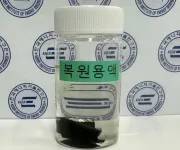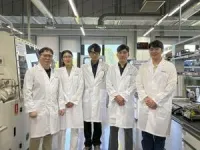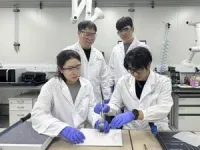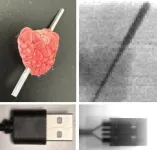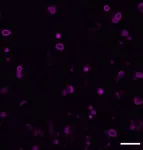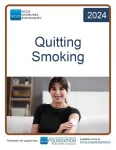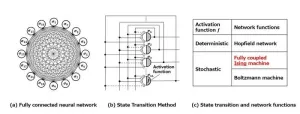(Press-News.org) A research team led by Dr. Jung-Je Woo at the Gwangju Clean Energy Research Center of the Korea Institute of Energy Research (KIER) has successfully developed a cost-effective and eco-friendly technology for recycling cathode materials* from spent lithium-ion batteries.
*Cathode Materials: Materials that play a crucial role in generating electricity by storing and releasing lithium ions during battery charging and discharging.
With the recent rise in electric vehicles and mobile devices, managing spent batteries has become a critical global challenge. By 2040, the number of decommissioned electric vehicles is expected to exceed 40 million*, leading to a sharp increase in waste batteries. Developing advanced recycling technologies has thus become an urgent priority, as the metals in batteries pose a significant risk of soil and water contamination.
*Government Support Measures for Activating a Future Waste Resource Circulation Ecosystem: Focusing on Batteries from End-of-Life Electric Vehicles" (KISTEP, February 8, 2023)
In conventional battery recycling, the typical method involves crushing spent batteries and extracting valuable metals such as lithium, nickel, and cobalt through chemical processes. However, this process requires high-concentration chemicals, which generate wastewater, and it demands substantial energy consumption due to the need for high-temperature furnaces that contribute significantly to carbon dioxide emissions.
To address these issues, direct recycling technology, which recovers and restores original materials without chemical alteration, has been attracting growing interest. However, direct recycling also has drawbacks, as it requires high-temperature and high-pressure conditions and involves complex procedures, making it both time-consuming and costly.
The research team has developed a novel technology for directly recycling spent cathode materials from lithium-ion batteries through a simple process that addresses the limitations of conventional recycling methods. This innovative approach restores the spent cathode to its original state by immersing it in a restoration solution under ambient temperature and pressure, effectively replenishing lithium ions.
The key technology is the application of galvanic corrosion using a restoration solution. Galvanic corrosion occurs when two dissimilar materials are in contact within an electrolyte environment, leading to the selective corrosion of one metal to protect the other. By utilizing this sacrificial mechanism, the research team has innovatively adapted this phenomenon for application in battery recycling.
The bromine in the restoration solution initiates spontaneous corrosion upon contact with the aluminum in the spent battery. During this process, electrons are released from the corroded aluminum and subsequently transferred to the spent cathode material. To maintain charge neutrality, lithium ions in the restoration solution are inserted into the cathode material. This recovery of lithium ions restores the cathode material to its original state.
Additionally, unlike conventional methods that require disassembly of the spent battery, the restoration reaction takes place directly within the cell, significantly enhancing the efficiency of the recycling process.
The research team confirmed through electrochemical performance testing that the restored cathode achieved a capacity equivalent to that of new materials.
Dr. Jung-Je Woo, the senior researcher, stated, “This research introduces a novel approach to restoring spent cathode materials without the need for high-temperature heat treatment or harmful chemicals.” He further emphasized, “The direct recycling of discarded electric vehicle batteries holds great potential for significantly reducing carbon emissions and establishing a circular resource economy.”
The team’s research results were published online in October 2024 in Advanced Energy Materials (Impact Factor 24.4, top 2.9%), a highly esteemed journal in the field of energy and materials science.
END
Developing advanced recycling technology to restore spent battery cathode materials
The recycling process restores spent batteries to 100% of their original capacity, making them equivalent to new batteries
2024-11-13
ELSE PRESS RELEASES FROM THIS DATE:
An advance toward inhalable mRNA medications, vaccines
2024-11-13
Most people don’t enjoy getting shots for treatments or vaccines. So, researchers are working to create more medicines, such as those made from messenger RNA (mRNA), that can be sprayed and inhaled. A study in the Journal of the American Chemical Society reports steps toward making inhalable mRNA medicines a possibility. Researchers outline their improved lipid-polymer nanoparticle for holding mRNA that is stable when nebulized and successfully delivers aerosols (liquid droplets) in mice’s lungs.
mRNA ...
A step toward safer X-rays with new detector technology
2024-11-13
X-rays are a common component of diagnostic testing and industrial monitoring, used for everything from monitoring your teeth to scanning your suitcase at the airport. But the high-energy rays also produce ionizing radiation, which can be dangerous after prolonged or excessive exposures. Now, researchers publishing in ACS Central Science have taken a step toward safer X-rays by creating a highly sensitive and foldable detector that produces good quality images with smaller dosages of the rays.
“This advancement reduces detection limits and paves the way for safer and more energy-efficient medical imaging and industrial monitoring,” says Omar F. Mohammed, ...
On the origin of life: How the first cell membranes came to exist
2024-11-13
Few questions have captivated humankind more than the origin of life on Earth. How did the first living cells come to exist? How did these early protocells develop the structural membranes necessary for cells to thrive and assemble into complex organisms?
New research from the lab of University of California San Diego Professor of Chemistry and Biochemistry Neal Devaraj has uncovered a plausible explanation involving the reaction between two simple molecules. This work appears in Nature Chemistry.
Life on Earth ...
New evidence-based information from NCCN offers tangible and moral support for people trying to quit smoking
2024-11-13
PLYMOUTH MEETING, PA [November 13, 2024] — The National Comprehensive Cancer Network® (NCCN®)—an alliance of leading cancer centers—today announced the publication of a new patient guideline designed to provide critical support and guidance for individuals with cancer who are seeking to quit smoking. Continued smoking elevates the risk of developing additional cancers, reduces the effectiveness of treatment, exacerbates treatment side effects, and is associated with shorter survival. The new NCCN Guidelines for Patients®: Quitting Smoking explains how to best use the tools that exist to help anyone quit ...
Solving complex problems faster: Innovations in Ising machine technology
2024-11-13
Computers are essential for solving complex problems in fields, like scheduling, logistics, and route planning, but traditional computers struggle with large-scale combinatorial optimization, as they can’t efficiently process vast numbers of possibilities. To address this, researchers have explored specialized systems.
One such system is the Hopfield network, a significant artificial intelligence breakthrough from 1982, proven in 1985 to solve combinatorial optimization by representing solutions as energy levels and naturally finding the lowest energy, or optimal, solution. ...
Grief-specific cognitive behavioral therapy vs present-centered therapy
2024-11-13
About The Study: This randomized clinical trial demonstrates that cognitive behavioral therapy for prolonged grief was superior to present-centered therapy after treatment and at follow-up with regard to comorbid symptoms. Both treatments were shown to be effective and acceptable, showing the potential for dissemination and increasing patient choice.
Corresponding Author: To contact the corresponding author, Rita Rosner, PhD, email rita.rosner@ku.de.
To access the embargoed study: Visit our For The Media website ...
New species discovered with refined DNA technology
2024-11-13
Sometimes plants are so similar to each other that the methods developed by 18th century scientist Carl Linnaeus for identifying species are not enough. In a thesis from the University of Gothenburg, completely new species of daisies have been discovered when analysed using modern DNA technology.
There are currently estimated to be around 8.7 million different species on Earth, of which around 2.2 million are found in the oceans. Many species can be identified in the classical way, by their physical characteristics, the morphology. For over a decade, botanists and zoologists have also been using DNA sequencing to more accurately identify species. ...
C-PATH announces Gender Equitable Medicines for Parkinson's Disease (GEM-PD) initiative
2024-11-13
INFORMATION EMBARGOED UNTIL WEDNESDAY, NOV. 13, 2024, 7 a.m. ET
C-Path Announces Gender Equitable Medicines for Parkinson's Disease (GEM-PD) Initiative
C-Path expands its worldwide leadership in accelerating drug development in neurology; seeks additional collaborators to broaden impact.
TUCSON, Ariz., November 13, 2024 — Critical Path Institute (C-Path) today announced a landmark initiative, Gender Equitable Medicines for Parkinson's Disease (GEM-PD), dedicated to globally ...
Faster flowing glaciers could help predict nearby volcanic activity
2024-11-13
Glaciers that are within three miles of a volcano move nearly 50% quicker than average, a new study has found, which could help create early warning of future eruptions.
In a new article published in Communications Earth & Environment today, researchers from the University of Aberdeen, University of Birmingham and Manchester Metropolitan University analysed velocity data from 85% of the world’s approximately 217,000 glaciers. After controlling for factors such as climate, ice thickness and surface slope, the team found that glaciers near active volcanoes typically flowed 46% faster than other glaciers.
Glaciers ...
MIT engineers make converting CO2 into useful products more practical
2024-11-13
As the world struggles to reduce greenhouse gas emissions, researchers are seeking practical, economical ways to capture carbon dioxide and convert it into useful products, such as transportation fuels, chemical feedstocks, or even building materials. But so far, such attempts have struggled to reach economic viability.
New research by engineers at MIT could lead to rapid improvements in a variety of electrochemical systems that are under development to convert carbon dioxide into a valuable commodity. ...
LAST 30 PRESS RELEASES:
Injectable breast ‘implant’ offers alternative to traditional surgeries
Neuroscientists devise formulas to measure multilingualism
New prostate cancer trial seeks to reduce toxicity without sacrificing efficacy
Geometry shapes life
A CRISPR screen reveals many previously unrecognized genes required for brain development and a new neurodevelopmental disorder
Hot flush treatment has anti-breast cancer activity, study finds
Securing AI systems against growing cybersecurity threats
Longest observation of an active solar region
Why nail-biting, procrastination and other self-sabotaging behaviors are rooted in survival instincts
Regional variations in mechanical properties of porcine leptomeninges
Artificial empathy in therapy and healthcare: advancements in interpersonal interaction technologies
Why some brains switch gears more efficiently than others
UVA’s Jundong Li wins ICDM’S 2025 Tao Li Award for data mining, machine learning
UVA’s low-power, high-performance computer power player Mircea Stan earns National Academy of Inventors fellowship
Not playing by the rules: USU researcher explores filamentous algae dynamics in rivers
Do our body clocks influence our risk of dementia?
Anthropologists offer new evidence of bipedalism in long-debated fossil discovery
Safer receipt paper from wood
Dosage-sensitive genes suggest no whole-genome duplications in ancestral angiosperm
First ancient human herpesvirus genomes document their deep history with humans
Why Some Bacteria Survive Antibiotics and How to Stop Them - New study reveals that bacteria can survive antibiotic treatment through two fundamentally different “shutdown modes”
UCLA study links scar healing to dangerous placenta condition
CHANGE-seq-BE finds off-target changes in the genome from base editors
The Journal of Nuclear Medicine Ahead-of-Print Tip Sheet: January 2, 2026
Delayed or absent first dose of measles, mumps, and rubella vaccination
Trends in US preterm birth rates by household income and race and ethnicity
Study identifies potential biomarker linked to progression and brain inflammation in multiple sclerosis
Many mothers in Norway do not show up for postnatal check-ups
Researchers want to find out why quick clay is so unstable
Superradiant spins show teamwork at the quantum scale
[Press-News.org] Developing advanced recycling technology to restore spent battery cathode materialsThe recycling process restores spent batteries to 100% of their original capacity, making them equivalent to new batteries
